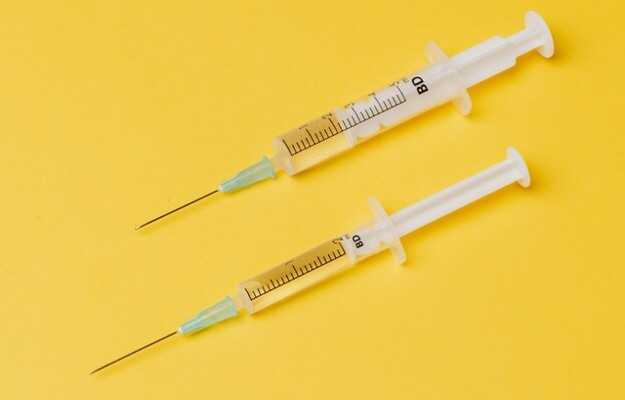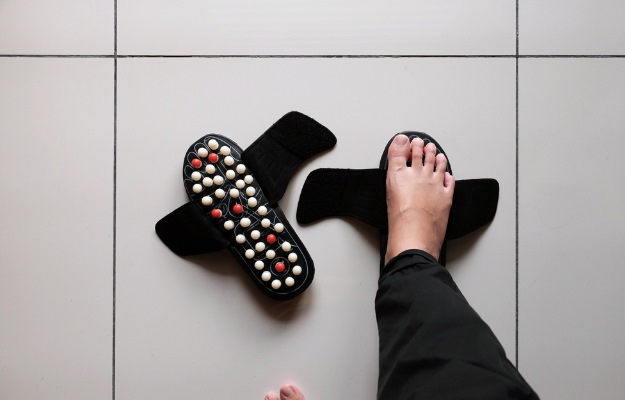Botox is the abbreviated, and more commonly used, term for medical-grade Botulinum toxin. Botulinum toxin is a neurotoxin substance naturally produced by the bacterium called Clostridium botulinum and other related species. A neurotoxin is a poisonous substance that infiltrates the nervous system (nerves, spine or brain) to impair its functioning. Common effects of a neurotoxin acting on nerves include the paralysis of the muscles it innervates and controls and loss of sensory function, like the sensation of touch or pain, mediated by the affected nerves. Botulinum toxin acts by inhibiting the release of acetylcholine, a neurotransmitter that transmits signals between nerve cells, at the junction of the nerve and the muscle, thereby causing paralysis and loss of muscle tone (or flaccidity). Various kinds of botulinum toxins are found in nature and are classified alphabetically from A through G. Few types of botulinum toxin are known to cause botulism, a rare and potentially fatal disease causing weakness of muscles that help in respiration, through wound infections and foods contaminated by Clostridium bacteria species. While naturally occurring botulinum toxin is a defence mechanism of the bacteria, its useful properties have been manipulated for gainful use in cosmetology and medicine. Botulinum toxin A and B have wide-ranging medical and aesthetic applications. Although Botox is popularly thought to be associated only with cosmetic treatments, it is a very useful tool in the management of various other medical conditions, particularly those where pain relief or muscle spasm control is needed.
- Types of botulinum toxins used
- Indications of Botox
- Botox cosmetic treatment
- Preparation for Botox
- Procedure of Botox
- Aftercare and results of Botox
- Precautions for Botox
- Contraindications for Botox
- Complications of botox
Types of botulinum toxins used
Although various subtypes of botulinum toxins have been identified in nature (A to G), only type A and B are used for medical purposes in people. Examples of botulinum toxins available for medical and cosmetic treatments include:
- OnabotulinumtoxinA (Botox®, Botox Cosmetic®): The most popular and widely used variety of type A botulinum toxin, commonly called Botox, has various medical and cosmetic uses. Medical uses include a role in the management of chronic migraine, overactive bladder, eye squint, eyelid spasm, cervical dystonia and even severe uncontrollable underarm sweating. Cosmetic uses of Botox include reduction of the appearance of wrinkles between the eyebrows, on the forehead and at the angle of the eyes colloquially termed as ‘crow's feet’.
- AbobotulinumtoxinA (Dysport®): A type A botulinum toxin, its main role is in the medical management of muscle spasms in arms and legs and can be used upwards of two years of age for that purpose. It is also used in cervical dystonia, a painful condition where the neck muscles spasm inappropriately and cause the head to turn involuntarily to the sides, upward or downward. This type of botulinum toxin can also be used for the cosmetic management of forehead lines and wrinkles.
- IncobotulinumtoxinA (Xeomin®): Similar to the one mentioned above, it finds its major application in the management of muscle spasms. It can be used for cosmetic purposes as well.
- PrabotulinumtoxinA (Jeuveau®): A variety of type A botulinum toxin, used exclusively for cosmetic reduction of the appearance of moderate to severe glabellar lines (wrinkles and lines on the forehead between the eyebrows) in adults.
- RimabotulinumtoxinB (Myobloc®): A type B botulinum toxin, it finds its application mainly in cervical dystonia.
(Read more: Home remedies for wrinkles)
Indications of Botox
Botox is used in the treatment of many medical conditions, often as an add on therapy, besides finding its vast implications in cosmetic dermatology and plastic surgery. Some medical uses of Botox include:
- Dystonias: Conditions that can affect a certain body part and cause involuntary repeated or sustained muscle spasm activity in a fixed pattern. Examples of dystonias can include but are not limited to:
- Cervical dystonia: Involuntary and painful head-turning motions due to inappropriate spasm of neck muscles (known as torticollis).
- Blepharospasm: Repeated spasms of one of both eyelids in a particular recurring pattern.
- Spasticity: The muscle tension is increased involuntarily at rest and the muscles stiffen or tighten, preventing normal fluid movement. The muscles remain contracted and resist being stretched. Conditions that can cause muscle spasticity are:
- Strabismus or squint of the eyes arises when one or more of the muscles that control eye movements are more powerful than the opposing muscles. This causes misalignment of the eyes. By injecting botulinum toxin into the stronger muscles and weakening them their unopposed action can be overcome and the alignment of the eyes corrected.
- Chronic pain disorders: Botox injections can be used in conditions with uncontrolled chronic pain and muscle spasms. Examples of Botox use for pain control include cases of muscular pain and migraine headaches.
- Excessive salivating, drooling and sweating: Some people suffer from disorders of excessive sweating from their underarms or the palms of their hands, which is uncontrollable and interferes with their daily lives. In such cases, Botox injections can be considered. Inappropriate drooling associated with neurological conditions like cerebral palsy is treated similarly.
- Disorders of involuntary muscles: Our bodies have some muscles that act on their own without our will to keep the body functioning smoothly. These involuntary muscles can sometimes become overactive and contract inappropriately, giving rise to problems like:
- Overactive bladder
- Anal fissures
- Hemorrhoids
Botox cosmetic treatment
Botox, or Botox cosmetic, is the alternative name of OnabotulinumtoxinA, a type A botulinum toxin, and is used extensively in cosmetic dermatology and plastic surgery to enhance facial aesthetics. By expertly injecting a small amount of Botox the underlying muscle can be temporarily paralysed. This can produce the desired effect of reducing the appearance of wrinkles, most commonly used in patient-reported problem areas like the forehead, the glabella (space between the two eyebrows), frown lines, laugh lines and ‘crow’s feet’ which refers to the age-related creases present at the outer corner of the eyes. Botulinum toxin has beneficial effects only on wrinkles caused by creases formed due to contracture of the overactive facial musculature. Botox has no effect on wrinkles caused by sun exposure or skin damage. While the FDA (Food and Drug Authority, USA) enlists Botox cosmetic only for its use in relaxation of frown lines, laugh lines, wrinkles and fine lines of the face, some off-label cosmetic treatments are offered as well. These treatments should be taken up only with a trained and trusted cosmetic dermatologist or plastic surgeon after thorough consultation with one's primary doctor.
(Read more: Age spots)
Cosmetic indications of Botox could include improving the appearance of the following:
- Moderate to severe frown lines (glabellar lines), crow’s feet and forehead lines
- Temporarily lift the brow
- Levator labii superioris muscle
- Nasal flare
- Mental or chin crease
- Upper lip wrinkling
- Nasolabial folds
- Depressor anguli oris muscle
Preparation for Botox
Upon choosing to get elective cosmetic Botox treatments, one must consult a trusted and trained practitioner. Both cosmetic dermatologists and plastic surgeons can offer such treatments and usually carry them out in an office setting without the need for hospital admission. When consulting with the Botox specialist, one must take special care to inform the doctor about known neuromuscular disorders, eyelid drooping or trouble raising eyebrows. Also share information about the history of facial surgery, or future plans of it, and all medicines being taken currently. The specialist will take a medical history and conduct a physical examination including that of the nervous system. If everything is in order, a date will be set for Botox injections. In preparation, some medicines, like blood thinners may be stopped for up to a week before Botox treatment. On the day, the patient is required to be makeup-free with a cleansed face.
Procedure of Botox
Once the patient is ready with a cleansed face and relaxed, the treatment is started. Botox injections of the upper face are performed with the patient seated. Few units of Botox are injected at specific anatomical sites to target the problem areas described by the patient. Botox injections of glabellar lines or frown lines between the two eyebrows may be preceded by a “glabellar spread test”. This involves spreading the frown line wrinkles apart with the thumb and index fingers which may allow an estimate of the expected benefit from botox. The patient is asked initially to frown and scowl, and the target muscles are palpated. Then, typically five Botox injections are given. Forehead horizontal lines and crow’s feet wrinkles are treated similarly.
Aftercare and results of Botox
Botox treatments are minimally invasive, and most people can resume their daily routine, while observing some precautions, immediately after leaving the specialist’s office. The results begin to appear between 24 to 48 hours and the full effect of Botox is in place by day 30. The treatments only offer temporary muscle relaxation and effects only last up to four months on moderate to severe wrinkles, at which point it would be appropriate to repeat treatment. While the wrinkles and creases relax, the patient still very much looks like themselves. It is important to go into treatment with realistic expectations for the best outcome.
(Read more: Anti-aging treatments and prevention)
Precautions for Botox
Following are some precaution that you may need to take:
- The patient is asked to remain upright for 2-3 hours to prevent the spread of toxin through the orbital septum of the eye.
- It is important to inform one's Botox specialist about any related medical or surgical history as well as any other abnormal facial change prior to getting Botox injections.
- Inform the Botox specialist about an ongoing or planned pregnancy.
- Disclose all medications used to the specialist to avoid drug interaction complications. Especially mention the use of antibiotic injections, muscle relaxants, allergy or cold medicine, sleep medicines, aspirin or other blood thinners.
- Always inform the treating doctor about having had a Botox injection before starting any and all new medicines.
Contraindications for Botox
Although a non-invasive, safe, effective and popular cosmetic procedure, some preexisting factors make the use of Botox imprudent. The following conditions may either warrant reconsideration or make Botox treatments entirely impossible:
- Wrinkles not caused by muscular contractions: Wrinkles and fine resultant of sun damage and skin ageing cannot be relaxed for a better facial appearance by Botox. Therefore, its use is not approved.
- Neuromuscular disorders: As Botox is a neurotoxin it is not permissible to use it in the case of a known preexisting neuromuscular disorder like myasthenia gravis or amyotrophic lateral sclerosis (ALS).
- Known hypersensitivity to any ingredient in the formulation: Sudden and serious allergic reactions are possible with botulinum toxin use. If the patient has experienced itching, rashes, red itchy welts, wheezing, asthma symptoms or dizziness after botulinum toxin injection in the past (Botox or other formulations) they should not undergo repeat treatment.
- Pregnancy or breastfeeding: Due to the lack of sufficient safety studies of Botox during pregnancy and while breastfeeding, it is advisable to avoid it.
- Unrealistic patient expectations: While Botox can provide impressive results, the outcome varies greatly from patient to patient and non-muscular causes of wrinkles can not be treated with it. It is important to note the effects of Botox are not permanent and last only up to four months, at which time repeat treatment is needed to retain the desired aesthetic outcome.
- Possible interference with the patient's work or daily activities due to changed facial expressions: Patients undergoing elective Botox cosmetic treatments should beware that the temporary muscle paralysing effect of Botox can interfere with facial expressions. This may be problematic to individuals who are performers, artists or actors relying on their facial faculties.
- Infection at the proposed injection site(s): Active infection, including acne or pimples, at the proposed site of Botox injection is a complete contraindication. Treatment can be undertaken after the infection clears.
Complications of botox
Although Botox cosmetic is a safe formulation of the botulinum neurotoxin, it can be associated with some side effects and allergic reactions in susceptible people, some of which can be fatal.
- Some side effects that can occur following a facial Botox shot are:
- Dry mouth
- Discomfort or pain at the injection site
- Tiredness
- Headache
- Neck pain
- Eye problems (double vision, blurred vision, decreased eyesight, drooping eyelids and eyebrows, swelling of eyelids and dry eyes)
- Beware of possible botulinum toxin side effects and in the case of appearance of any of the following, within hours or even up to weeks following Botox injections get emergency medical assistance at a hospital. These are more likely to occur in the case of a preexisting neuromuscular disorder:
- Problems swallowing, speaking, or breathing, due to weakening of associated muscles, can be severe and result in loss of life.
- Double vision
- Blurred vision
- Drooping eyelids
- Hoarseness or change or loss of voice
- Trouble saying words clearly
- Loss of bladder control
- Wheezing or exacerbation of asthma
- Feeling faint
- It is possible to experience loss of strength or general muscle weakness, vision problems or dizziness within hours to weeks of taking Botox cosmetic. In such a case, do not drive a car, operate machinery or participate in any other dangerous activities.
- Some sudden and serious allergic reactions can occur with the use of botulinum toxin products. If the following appear following injection, report to your doctor immediately:
- Itching
- Rash
- Red itchy welts
- Wheezing
- Asthma symptoms
- Dizziness
- Feeling faint
Doctors for Botox

Dr. Ashish Mishra.
Dermatology
4 Years of Experience
Dr. Divyanshu Srivastava
Dermatology
10 Years of Experience

Dr. G.ARUN
Dermatology
6 Years of Experience

Dr. Ashwin charaniya
Dermatology
8 Years of Experience
References
- Pirazzini M, Rossetto O, Eleopra R, Montecucco C. Botulinum Neurotoxins: Biology, Pharmacology, and Toxicology. Pharmacol Rev. 2017 Apr;69(2):200-235. PMID: 28356439.
- Seidman LM, Brooks JK, Bashirelahi N. Botulinum toxin: a review of applications for the head and neck. Gen Dent. 2019 Mar-Apr;67(2):55-58 PMID: 30875307.
- Dover JS, Monheit G, Greener M, Pickett A. Botulinum Toxin in Aesthetic Medicine: Myths and Realities. Dermatol Surg. 2018 Feb;44(2):249-260. PMID: 29016535.
- Patil S, et al. Botulinum Toxin: Pharmacology and Therapeutic Roles in Pain States. Curr Pain Headache Rep. 2016 Mar;20(3):15 PMID: 26879873.
- Do TP, Hvedstrup J, Schytz HW. Botulinum toxin: A review of the mode of action in migraine. Acta Neurol Scand. 2018 May;137(5):442-451. PMID: 29405250.
- Picelli A, et al. Adjuvant treatments associated with botulinum toxin injection for managing spasticity: An overview of the literature. Ann Phys Rehabil Med. 2019 Jul;62(4):291-296. PMID: 30219307.
- Jia Z, et al. Adverse Events of Botulinum Toxin Type A in Facial Rejuvenation: A Systematic Review and Meta-Analysis. Aesthetic Plast Surg. 2016 Oct;40(5):769-77. PMID: 27495260.















